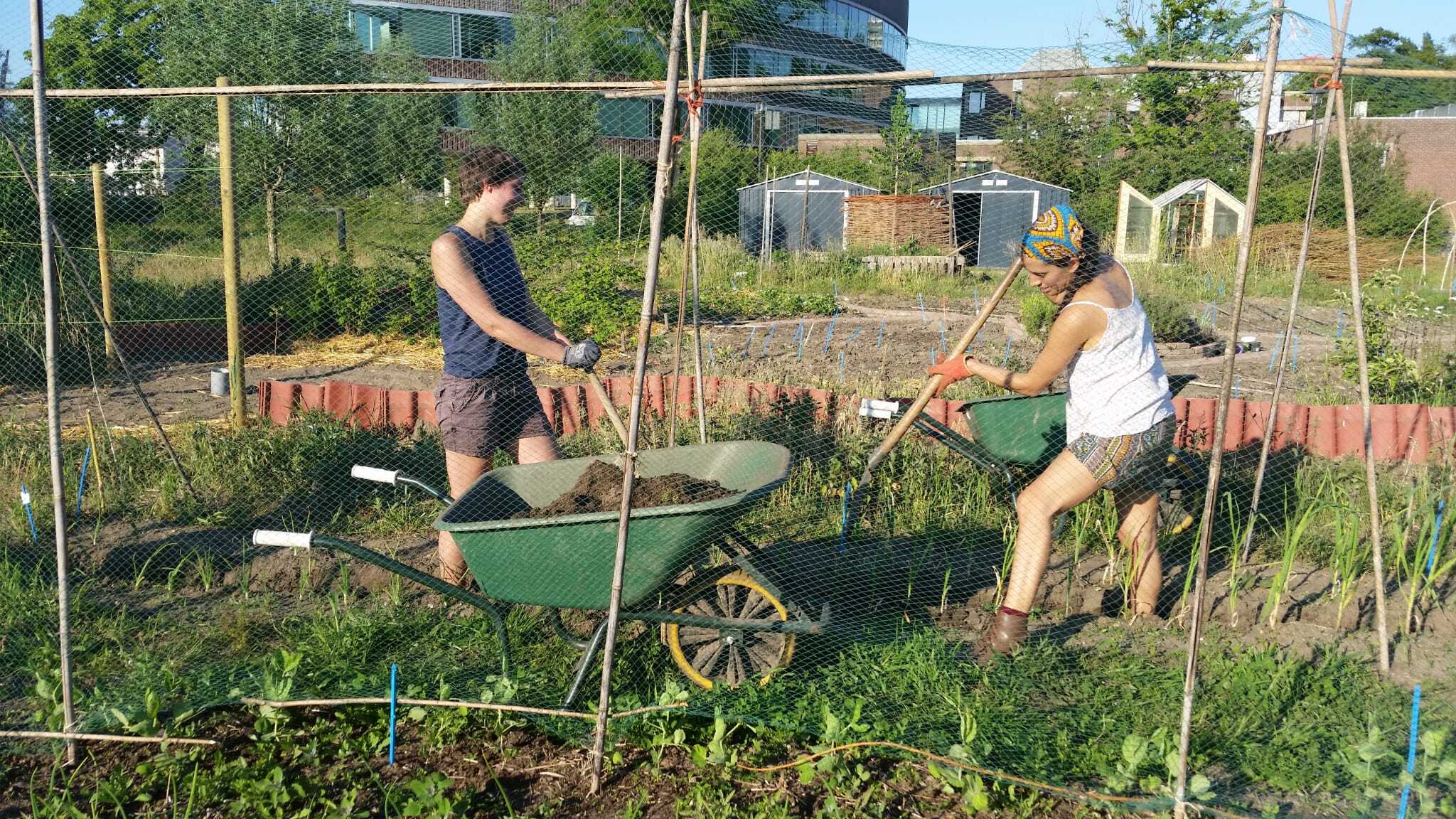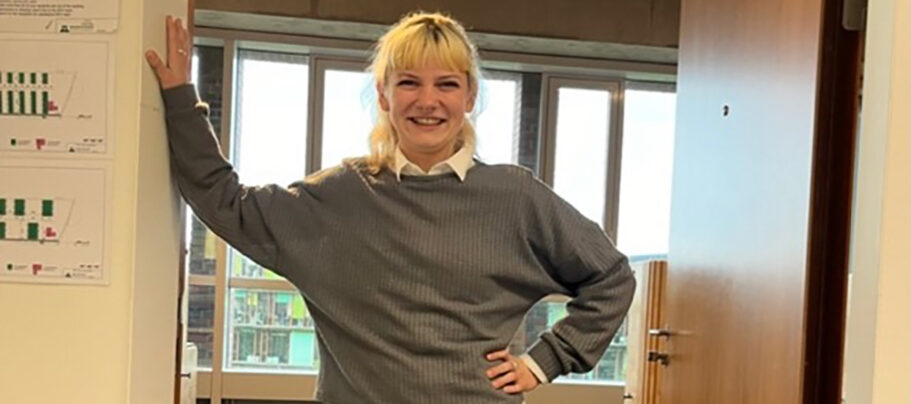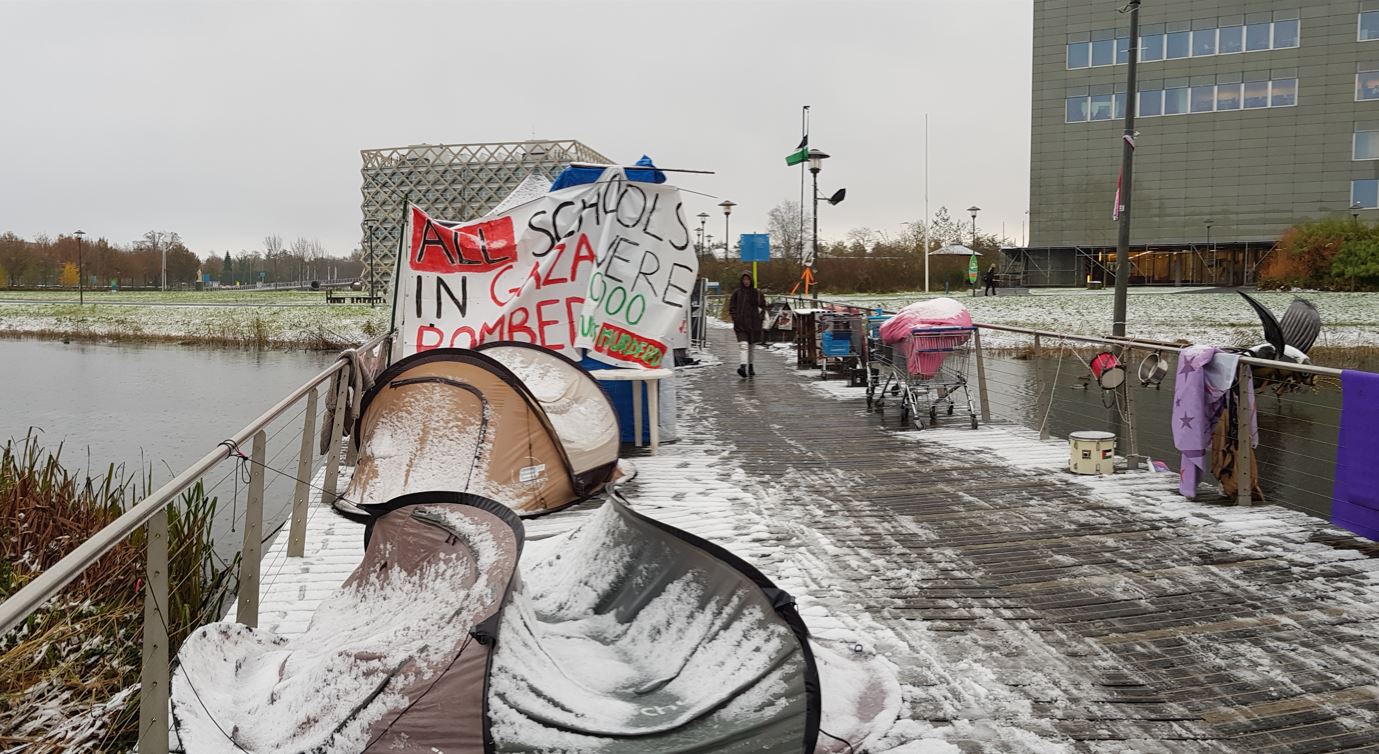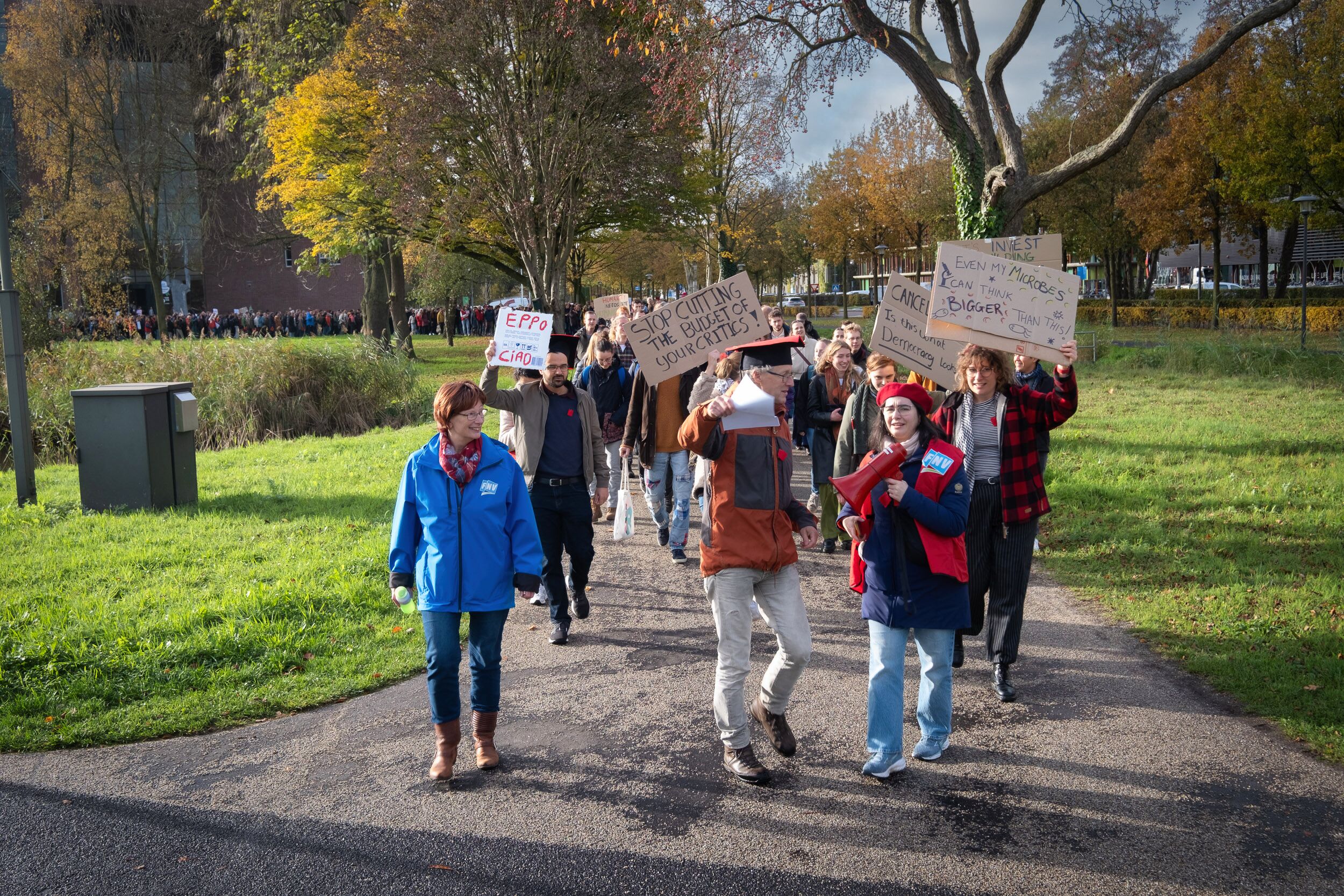Sylvana Harmsen scatters thousands of kilos rock dust on small patches of the Veluwe. Cameras will monitor the effect this has on the soil in the coming years.
It is a bit of a spectacle. Deep in the Hoge Veluwe Park, a woman wearing a facemask scatters a fine grey powder from a white bucket. Almost as if she is illegally scattering the ashes of a beloved. But the reality is that the grey dust is finely ground stone (soil feed) and the woman in question is Sylvana Harmsen. The rock dust should restore the mineral balance in the forest soils, which have been severely impacted by nitrogen deposits.
Forest rejuvenation
Harmsen and her colleagues have already proven that this soil feed works, in experiments in the park and in the Mastbos forest in Breda. In the past month, a follow-up study was launched in the park. In a parallel study, Harmsen researches the effect of rock dust on forest rejuvenation. Her focus is on the growth of young deciduous trees. Oaks, in particular, are experiencing difficulties on the Veluwe.
Perhaps the foliage growth is better, making them a more attractive snack
Sylvana Harmsen, PhD candidate Wildlife Ecology and Conservation
The dust is finely ground stone originating in a mine in Norway. It is rich in potassium, calcium and magnesium. The dust enriches the soil and lowers its Ph value, which benefits the entire ecosystem. The soil life and vegetation change to accommodate the growth of young trees. But, there is also a flip side: the young saplings attract grazers such as deer, roe deer and mouflons.
Fenced
‘Saplings may become tastier,’ Harmsen states. ‘But how exactly this effect occurs, we don’t yet know. Perhaps the foliage growth is better, making them, a more attractive snack.’ How the addition of rock dust affects the balance between rejuvenation and voraciousness of herbivores is unclear. A part of the testing fields has been fenced so that the effect of grazers can be monitored. This way, the saplings will be left alone.
Harmsen uses the existing Snapshot Hoge Veluwe network of camera-traps to keep a literal eye on the grazers. In the park, 70 camera traps are installed to register passing wildlife and, in doing so, provide data on the density of local grazing activities. Harmsen taps into 12 of these available traps to enrich the soil with rock dust. A further 12 traps serve as control areas.
Effort
The ‘fertilising’ requires some effort. Each 30 x 30 meter experimental field requires 900 kg of rock dust to be scattered. ‘This equals 10 tonnes per hectare, which is 180 buckets.’ The areas have been carefully selected to give insight into the effects on both deciduous and coniferous trees. As stated, some of the fields are fenced. Harmsen: ‘The rock dust may help, but the presence of grazers may interfere.’
In addition to monitoring the grazing activity, the development of the soil and vegetation is also carefully controlled. The project spans five years, longer than a typical PhD trajectory. ‘So, I’m doing this research in part-time,’ Harmsen clarifies. ‘I don’t expect to see results in the first three years. A normal PhD study period is too short for this research.’






